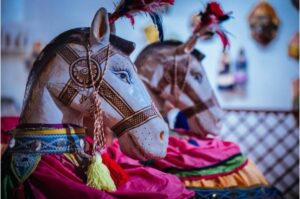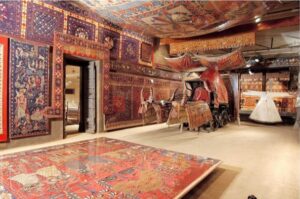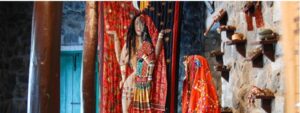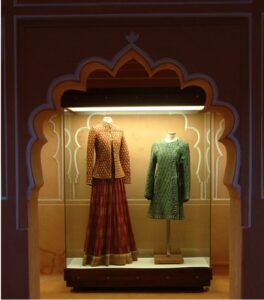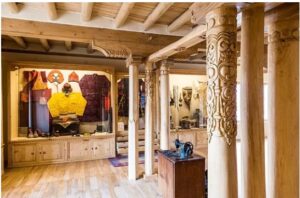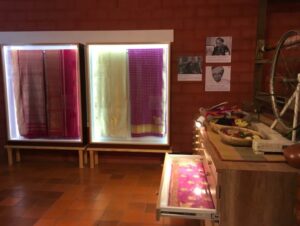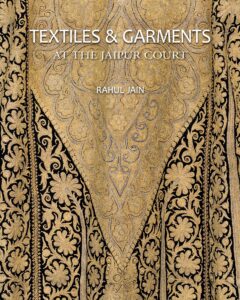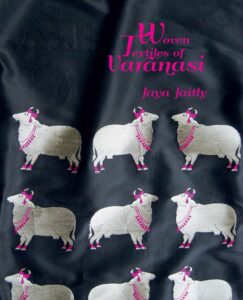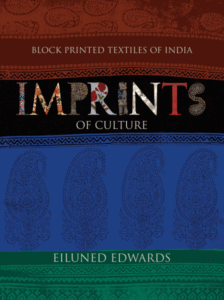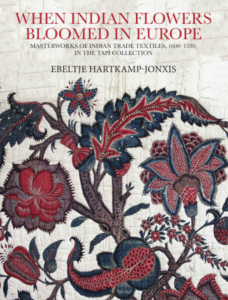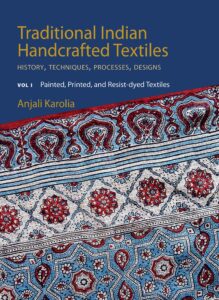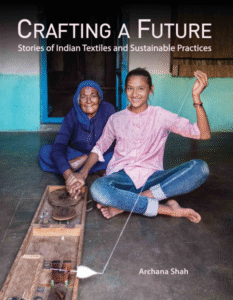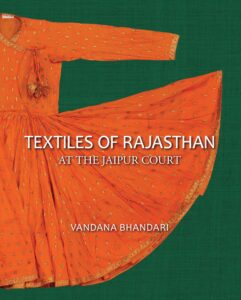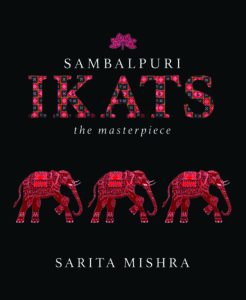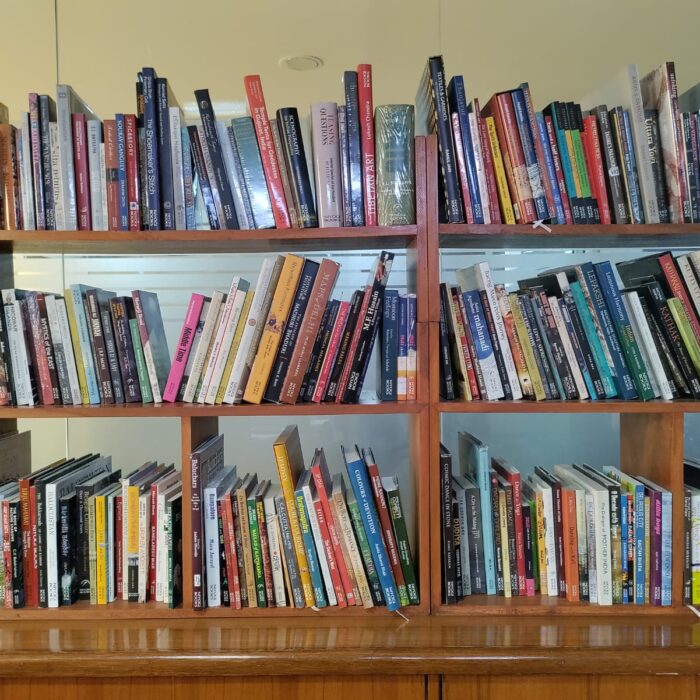India’s Rich Textile Heritage: 7 Museums That Preserve Our Handwoven Legacy
India is a country of 121 languages. Is it any wonder that the handmade textiles of India are just as varied? From the beautiful ikat weaves of Telangana to the Rajasthani bandhanis, from the mekhola-sador of Assam to the intricate chikankari works of Lucknow – India’s tradition of handmade textiles is astonishingly rich.
Through its tumultuous history of invasions and colonisations, India has become a melting pot of cultures, and the homegrown weave reflects the changing values and traditions of the country through the ages.
These exquisite fabrics are not only an integral part of Indian culture, but also essential to the country’s economy. Recent surveys conducted by the Kalabhoomi museum in Odisha found that more than 1.24 lakh people are dependent on the handloom sector for their livelihood, either directly or indirectly.
Despite their importance, India’s rich tradition of handmade textiles mostly remains undocumented. This is where museums become an indispensable part of the process of educating the masses about the cultural and historical relevance of these textiles.
Museums Preserving India’s Timeless Handloom Traditions
1. National Handicrafts and Handlooms Museum (NHHM), New Delhi
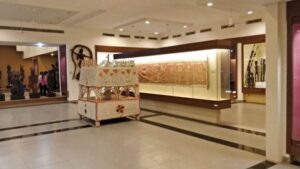
Right opposite the magnificent Purana Qila of Delhi, lies a treasure trove of marvellous specimens of traditional Indian handicrafts and handlooms. Designed by the renowned architect Charles Correa, the National Handicrafts and Handlooms Museum houses over 33,000 textiles, paintings and other handicrafts collected over the decades from various states since its inception in 1956.
Embroidery styles like kanthas, chikankari works and chaklas; the famous Rajasthani bandhani; traditional shawls like jamawars, pashmina, shahtosh, and naga shawls; block printed fabric from Gujarat; sarees like baluchar, jamdani, chanderi, and ikat; himru pieces from Maharashtra; gorgeous textiles from the Lambadi, Toda and Naga tribes of Northeastern India – the collection at NHHM would turn the head of any fashion enthusiast.
A unique interactive feature of NHHM is the Crafts Demonstration Program, where visitors can experience live demonstrations from different craftsmen from various states. The museum complex also houses temporary galleries for exhibitions and open-air theatres for cultural performances.
2. Kala Bhoomi, Odisha Crafts Museum, Bhubaneshwar
The Kalabhoomi museum in Odisha is a true product of the land. Built with local materials such as the laterite stone, the museum celebrates the surprising variety of Odisha’s artisanal textiles.
From the mirror-work appliqué unique to Odisha to the Bomkai, from Tussar silk to the Kotpad sarees – the display section of the museum seeks to delight and educate its visitors on the true diversity of Odisha’s rich textile traditions.
The live section of the museum, on the other hand, houses an open-air theatre as well as spaces to conduct workshops throughout the year.
3. Calico Museum, Ahmedabad
India’s first textile museum, Calico Museum, opened its gates in 1949, following an inauguration by India’s first prime minister, Jawaharlal Nehru.
Cared for by the Sarabhai foundation, the museum is divided into two parts – the ‘Sarabhai-ni-haveli’ and the ‘chauk’ – both of which display rare collections of well-preserved and exceptional textile forms.
The haveli contains exquisite Vaghri Kalamkari pieces that have tremendous religious significance, a 27-feet-long Chitrakatha (a story told only through painting on cloth), and an incredible collection of ‘Pichwai’, a style of devotional painting on cloth, adorned with pure gold particle pasting work or intricate needlepoint embroidery. These collections of textiles with religious significance tell the story of changing religious sentiments in India through the ages.
The ‘Chauk’ or the courtyard, on the other hand, boasts a collection of embroideries and handicrafts from various Indian states such as Gujarat, Odisha, West Bengal and Kashmir.
4. Dakshinchitra Museum, Chennai
DakshinChitra Museum flips the idea of what a museum is supposed to look like on its head.
Started by the Madras Craft Foundation, Dakshinchitra Heritage Museum aims to exhibit the diverse cultures and lifestyles of the South Indian states. The museum houses (pun intended) 18 authentic traditional houses from various states. These buildings were brought over to Chennai and reconstructed by skilled artisans from their home states.
Each house, in turn, is outfitted with a contextual exhibition that showcases the rich arts and culture of the state it came from. The textile collection, across the different houses, comprises everyday silk and cotton attires of men and women, including dhoti, lungi, kurta, saree, turban, veils and ceremonial attires. The famed Madras handkerchiefs, Ikat, Kalamkari, telia rumal, and various types of decorative wall hangings and ritual textiles are not excluded either.
DakshinChitra also offers workshops on weaving and garment conservation, while their conservation lab focuses on restoring and preserving the various artefacts and textiles in their collection.
5. Anokhi Museum of Hand Printing, Jaipur
At the heart of the beautiful city of Amber lies a charming ancient mansion called ‘Chanwar Palkiwalo ki Haveli’. If you happen to walk inside the 400-year-old building, you would be surprised to find a quaint collection of gorgeous block painted fabrics.
An extension of the Anokhi clothing brand, the museum showcases exquisite textile pieces with handmade prints and block painted patterns that reflect the rich culture and art forms of Rajasthan. Visitors can not only enjoy the small yet varied collection, but also be delighted by the on-site demonstrations of wood block carving by local craftsmen.
Keeping in mind the challenges that handicrafts face in our increasingly capitalistic world, Anokhi Museum dedicates itself to educating its visitors with exhibitions, educational programmes and museum publications.
6. Textile Museum of Ladakh
Jigmat Norbu and Jigmat Wangmo, founders of Jigmat Couture, established the avant-garde Textile Museum of Ladakh to preserve rich Ladakhi art and crafts and give local artisans a much-needed platform.
Located in the picturesque city of Leh, the façade of the museum has been imbued with a unique Ladakhi sensibility by the inclusion of quintessential Ladakhi architectural elements such as Rabsal, Chong-tsay, Sum-stig, Yabs, Nima-lagang, along with wood carvings that have textile motifs.
The main museum houses an incredible variety of costumes and textiles that were either woven in Ladakh or reached Ladakh through trade routes, and made their way into the everyday lives of the Ladakhi people. An entire floor in the museum is dedicated to conducting workshops on traditional spinning, weaving and dyeing, and houses an impressive collection of books and resource materials.
The museum also includes a heritage house, used as a caravan during the Silk Route trade, which has now been repurposed into a private gallery space to showcase the work of emerging artists.
7. Vimor Museum of Living Textiles
Nestled in the quiet bylanes of Bangalore’s Victoria Layout, Vimor Museum of Living Textiles is a cultural endeavour of the legendary heritage saree store, Vimor, that was visited by the likes of Indira Gandhi, Sonia Gandhi and Jacqueline Kennedy.
All the heritage weaves displayed at the museum have enthralling stories behind them. For example, the fascinating 3.15 metre-long Datthi saree with two pallus was woven for little girls in the days when petticoats were not worn. Another gem in the collection, the Kuri Polla, was hand-embroidered by Nanjamma Ballachanda, Muddaya’s paternal grandmother, in the early decades of the twentieth century. The collection also includes Gujrati Tanglia shawl, the Annam Jarithari and even quirky contemporary sarees adorned with motifs of vintage cars, biplanes or gramophones.
The museum allows the audience to not only learn about these fascinating weaves but also experience them first-hand by offering to recreate any saree from the collection that they wish to wear.
Pavithra Muddaya and her mother, Chimmy Nanjappa, founders of the museum, have made the place an institution that takes forward the legacy of Indian handloom by conducting workshops and hosting talks by renowned weavers and designers. The museum has also initiated Project ‘Second Chance’, a skill development program to economically empower women through hand embroidery and weaving.
A Vibrant Tribute To India’s Handwoven Heritage By Niyogi Books
While museums work tirelessly to preserve India’s textile traditions in physical form, books remain another powerful medium to document, interpret, and share these living legacies with the world.
Niyogi Books, known for its dedication to Indian art, culture, and heritage, has curated an exceptional collection of titles that celebrate the richness of India’s handloom history. Whether you’re a student, researcher, textile enthusiast, or simply a curious reader, these books offer deep insights into weaving techniques, cultural symbolism, and the lives of artisans across regions.
Here are some recommended titles from Niyogi Books for anyone looking to delve deeper into the world of Indian textiles:
If you are interested in any of these titles, please write to us at niyogibooks@gmail.com for further details.

